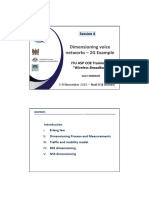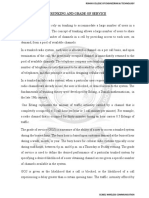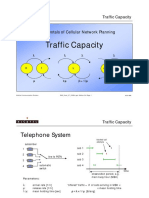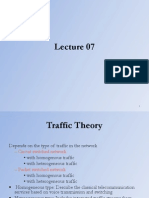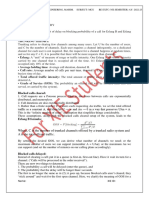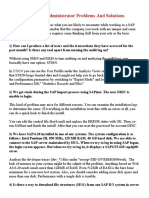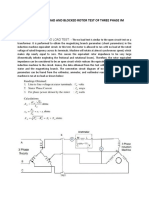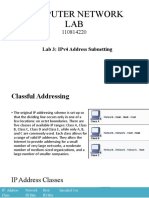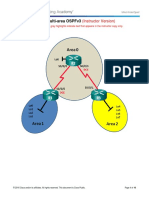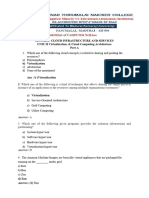0% found this document useful (0 votes)
12 views16 pagesLecture 2
The lecture discusses spectral efficiency in cellular networks, which measures the effective use of radio spectrum and is expressed in Erlangs/m2/Hz. It covers the relationship between offered traffic, number of channels, and bandwidth, as well as the importance of trunking and Grade of Service (GoS) in managing user demand. Additionally, it introduces Erlang formulas for calculating blocking probabilities and traffic intensity, with examples illustrating their application in real-world scenarios.
Uploaded by
DenisCopyright
© © All Rights Reserved
We take content rights seriously. If you suspect this is your content, claim it here.
Available Formats
Download as PDF, TXT or read online on Scribd
0% found this document useful (0 votes)
12 views16 pagesLecture 2
The lecture discusses spectral efficiency in cellular networks, which measures the effective use of radio spectrum and is expressed in Erlangs/m2/Hz. It covers the relationship between offered traffic, number of channels, and bandwidth, as well as the importance of trunking and Grade of Service (GoS) in managing user demand. Additionally, it introduces Erlang formulas for calculating blocking probabilities and traffic intensity, with examples illustrating their application in real-world scenarios.
Uploaded by
DenisCopyright
© © All Rights Reserved
We take content rights seriously. If you suspect this is your content, claim it here.
Available Formats
Download as PDF, TXT or read online on Scribd
/ 16


